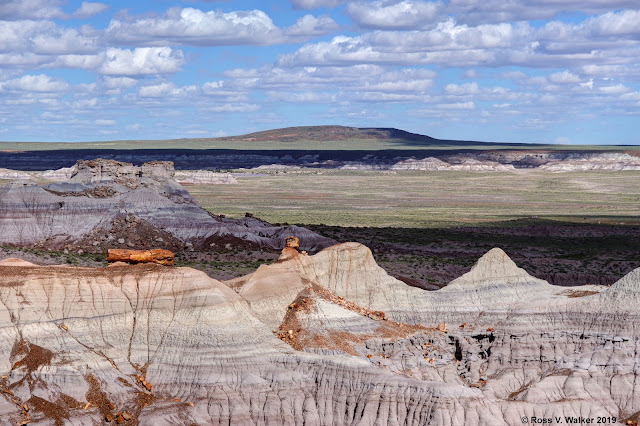My most recent post showed petrified wood at Petrified
Forest National Park in Arizona. The
other big attraction at the park is often called the “painted desert”.
The painted desert stretches across much of northern Arizona, so this national park covers just a small portion, but it is easily accessible here. The brown debris near the center of this photo is probably fragments of petrified logs.
The layers of color were created over millions of years of change in the earth’s surface. Earthquakes, volcanic ash, and flooding deposited layer after layer of different minerals, and erosion exposed them for us to see.
These hills are known as “the tepees”.
I only had a few hours to explore the park, but I noticed
that the best petrified logs are in the south, and the best views of the
painted desert are in the north.
The variations of color are just amazing, and this photo gives
some idea of the vast uninhabited space around the Park.
There are other attractions in the park including
petroglyphs, pueblo ruins, and a Route 66 monument. It is well worth the trip.
Thanks for looking, but remember that these are copyrighted
photos that can not be used without permission, and in most cases a reasonable
fee.








